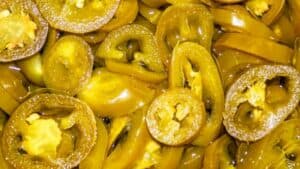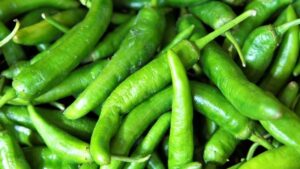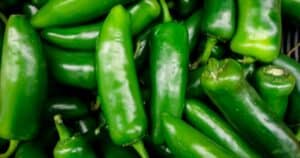If you enjoy the flavor of jalapenos but find raw ones too hot to handle, you may wonder if cooking helps reduce their intense spiciness. The quick answer is yes, cooking jalapenos does make them milder and easier to eat. Here’s why:
- High heat breaks down and disperses the chemical compounds capsaicin that causes jalapeno
spice . - Diluting capsaicin in cooking liquid and other ingredients decreases direct contact and burn.
- Cooking makes jalapenos softer in texture, so they’re not as peppery.
- You can also reduce heat by seeding jalapenos, controlling portions, or having dairy ready to tame the burn.
While cooked jalapenos aren’t totally tame, they do offer a nice mild kick of flavor. The rest of this article explores why cooking decreases jalapeno
Why Cooking Reduces Jalapeno Spice
The chemical compound capsaicin gives jalapenos their signature spicy burn. When you bite into a raw chili pepper, the capsaicin binds directly to receptors on your tongue.
During cooking, the capsaicin gets distributed throughout the entire dish in sauces, oils, juices and other ingredients. This dilution means less collects directly on the jalapeno pieces, reducing the
High temperatures also help break down some of the capsaicin compounds themselves, lowering the overall heat level.
So while cooked jalapenos are less spicy than raw, they still deliver a nice mild kick of heat. Their softer texture when cooked also makes them easier to eat.
How to Check Jalapeno Heat Levels
If you can’t handle super-hot peppers, use these tips to gauge the
- Color – Reddish peppers are hotter than green ones. Purple/black means very spicy.
- White lines – More stretch marks indicate more capsaicin and heat.
- Size – Larger, older jalapenos tend to be hotter.
- Tip taste – Chop the tip and lick it.
Spice concentrated in seeds and ribs. - Refrigeration – Storing makes peppers hotter over time as they age.
With these insider tricks, you can better determine raw jalapeno heat before cooking with them.
Safe Ways to Eat Raw Jalapenos
While cooking jalapenos is common, you can safely consume them raw as long as you take precautions:
- Avoid skin contact – Use gloves when handling. Capsaicin can irritate skin.
- Remove seeds – Deseeding reduces heat so peppers are milder.
- Limit quantity – Start with just 1/4 pepper and work up to more as tolerated.
- Have milk ready – Dairy helps neutralize capsaicin burn.
- Watch fingertips – Don’t touch eyes or sensitive areas after handling.
When preparing raw, be extra careful and go slowly at first. Also pick younger, greener jalapenos which tend to be less hot.
4 Delicious Ways to Use Jalapenos
Beyond eating raw or cooked in main dishes, jalapenos shine in recipes like:
1. Pickled jalapenos – Slice thinly into rings and pickle in vinegar brine. Top tacos and nachos.
2. Roasted jalapenos – Roast in oven until skin blisters, then remove. Chop up for seasoning.
3. Grilled jalapenos – Blister halved peppers on the grill. Add to cheesesteaks, brats, etc.
4. Stuffed jalapenos – Fill halved peppers with cheese then bake until melty. Perfect appetizer bite.
Get creative with pickled, roasted, grilled and stuffed jalapenos!
Conclusion
While raw jalapenos pack some serious heat, cooking does help decrease their spiciness by dispersing and breaking down those tongue-burning capsaicin compounds. For a milder kick of heat, go for cooked jalapenos in your favorite Mexican and Tex-Mex dishes. But you can still enjoy fresh raw jalapenos in moderation with proper precautions.





